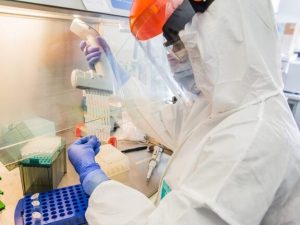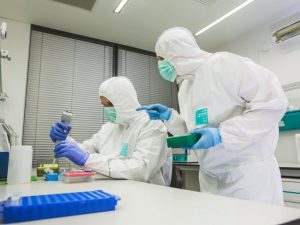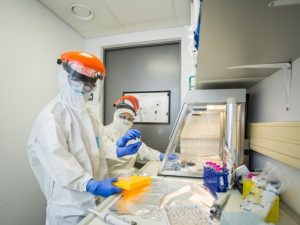Laboratory Facilities
Ancient DNA (aDNA) refers to genetic material extracted from the remains of organisms that lived hundreds to thousands of years ago, typically recovered during paleontological or archaeological excavations. Working with such highly degraded material requires not only specialized analytical methods but also strict laboratory protocols to prevent contamination and ensure data reliability.
All genetic work is conducted at the Laboratory of Paleogenetics and Conservation Genetics, Centre of New Technologies, University of Warsaw. Following best practices in ancient DNA research, the facility is organized into three strictly separated work zones: the Clean Room, the Semi-Clean Room, and the Post-PCR Laboratory.
All paleontological samples are processed in the clean laboratory, where no modern DNA work is ever performed. This space is physically isolated from the other zones, equipped with HEPA filtration, and maintained under positive air pressure to prevent external contamination. Entry is restricted to personnel wearing clean disposable suits, caps, masks, protective footwear, and double gloves. Library preparation is performed in PCR chambers, and all reagents are UV-sterilized before use. The laboratory is thoroughly cleaned and irradiated with UV light after each session to eliminate any residual DNA and minimize cross-contamination.
Work involving modern DNA is carried out in the semi-clean room, where we perform DNA extraction and library preparation. Activities involving PCR products—such as bait preparation, indexing PCR purification, and hybridization reactions are restricted to the Post-PCR laboratory.
Each facility is equipped with UV sterilization systems, and personnel are required to move only in one direction, from the cleanest to the least clean zone, to prevent contamination.
 |
 |
 |
